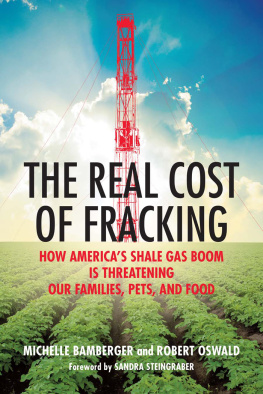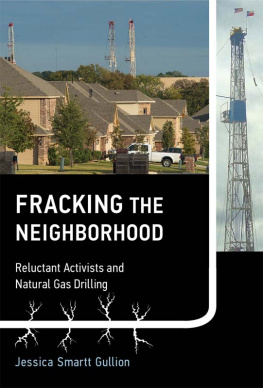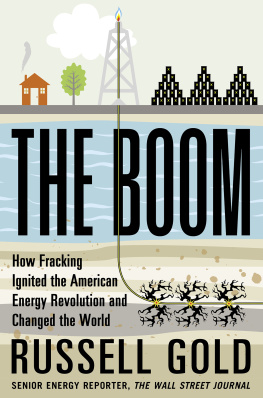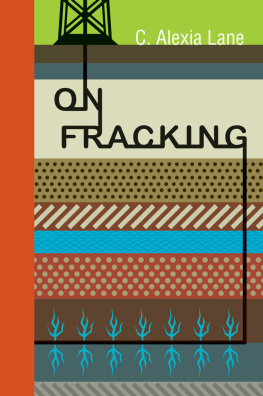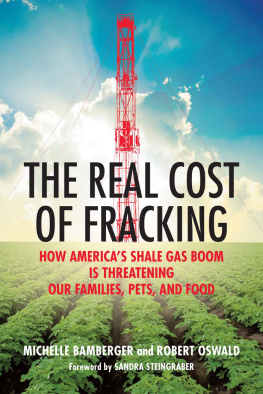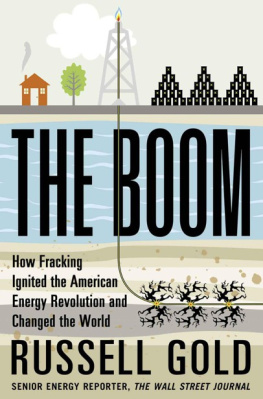THE REAL COST OF FRACKING
How Americas Shale Gas Boom Is Threatening Our Families, Pets, and Food
MICHELLE BAMBERGER and ROBERT OSWALD
Foreword by SANDRA STEINGRABER
BEACON PRESS
BOSTON
For the animals
CONTENTS



FOREWORD
Years ago, my home state of Illinois entertained the proposals of an industry that claimed to have a magic solution to both fossil fuel dependency and overflowing landfills: generate electricity by burning garbage, including industrial waste.
Thus began the incinerator wars.
In the early 1990s, one such facility was sited a half mile from my grandfathers farm. Members of the village board that green-lighted its application were wined and dined by the out-of-state owners and enticed by promises of a new school library. Some of them, as it turned out, were also investors with a direct financial stake in the outcome.
On the other side were farmers who stood to lose their water, their property values, the peaceful enjoyment of their homes, and the privilege of piloting their tractors down county roads unclogged with convoys of trucks ferrying toxic ash.
Tensions were high. Neighbors squared off against neighbors; opinions within families splintered; brothers were no longer on speaking terms. And yet, public conversation about the issue roiling the community was, at first, rare. When I asked my grandmother why her church did not take a position on the incinerator, her reply came in the form of a truism:
Silence is the sound of money talking.
Two decades later, there are no trash incinerators in downstate Illinois. A forceful citizen uprising eventually put an end to all nine proposed incinerators, and nary a one was built. (Which is a very good outcome. What was then called state of the art would be, by nowas municipalities in other states went on to discoverdangerous, fire-breathing relics and a sunk-cost disincentive to curbside recycling.)
It was data that broke the silence. The data said that incinerators, even state-of-the-art ones, emit a potent synthetic carcinogen: dioxin. While rural communities considered the seductive pitches from incinerator salesmen, the United States Environmental Protection Agency released a draft of its long-awaited dioxin reassessment; risk analyses were promulgated; and emissions data were published and publicized.
In response to the science, people started talking.
They said: Dioxin lasts in soil and in human fat for thirty-five to fifty years.
They said: Dioxin causes cancer, incinerators make dioxin, and, look, here are good studies to back up these facts.
They said: One overturned ash truck on a windy day spells ruin. And even without accidents, dioxin will seed itself into the air from the fly ashand sift down over farm country, over the soil that is the beginning of the food chain, over our hogs and turkeys, over creation itself.
The message that science brought was transformationalespecially when amplified by community teach-ins, ballot referenda, letters to the editor by local physicians, and a float in the annual Fourth of July parade that proclaimed, God recycles, and the Devil burns. By the time all the talking reached the buyers of central Illinois agricultural products (e.g., popcorn), a new day had dawned.
The incinerator wars at the end of the last century became the fracking wars at the beginning of this one. This time, however, science has been bound, gagged, and tossed into a corner.
At least three layers of scientific silence surround fracking.
Making up the first are legal exemptionsgranted by the 2005 Energy Policy Actto key provisions of our federal environmental statutes. These allow companies engaged in the extraction of gas and oil from shale via fracking to conceal the names of the chemicals and chemical mixtures they blast down holes in the ground. No other industry can withhold such information. Fracking companies are also unburdened by any requirement to monitor their emissions. Methane may seep out of well casings; heavy metals may slosh out of flowback pits; benzene may rise from wellheads and compressor stations; radon may be pushed through pipelines; formaldehyde may flow from flare stacks. But no one is routinely measuring it and estimating its cumulative impact.
And without right-to-know data or emissions data, public health science doesnt operate very well. Without knowing what chemicals and mixtures are used and what pollutants are released, researchers cant systematically measure human exposures or definitively connect exposures to health outcomes.
Second is the silence emanating from state and federal agencies, which both remain curiously uncurious about the public health effects of fracking.
With more than 6,000 active gas wells and more than 3,300 documented violations, Pennsylvania is already an intensely fracked statewith much more fracking to come. And yet neither the Pennsylvania Department of Environmental Protection nor the US EPA has conducted comprehensive measurements of air and water contaminants. And neither agency has made any systematic effort to interpret the findings they do possess. It was detective work by the Scranton Times-Tribune that foundburied deep in the Department of Environmental Protections own records161 cases of water contamination from fracking in Pennsylvania.
When it uncovered actual evidence of such contamination in real peoples drinking water, the US EPA bowed to industry pressure and suspended all further investigation.
In Dimock, Pennsylvania.
In Pavillion, Wyoming.
In Weatherford, Texas.
And, so, where there should be inquiry, debate, hearings, and peer-review publications, there is only the sound of a closing book.
The third layer of silence takes the form of nondisclosure agreements and the hush money that comes with them. These take the form of contracts with secrecy clauses that are signed by homeowners who allege that their water has been ruined or their health damaged by nearby drilling and fracking operations. In such cases, the price of a cash settlement or property buy-out is the agreement to tell no one the story of what happenednot the neighbors, not the newspapers, and not the public health community. Ever.
A 2013 investigation by Bloomberg News of hundreds of regulatory and legal filings across the nation found this kind of enforced silence to be the rule rather than the exception. A strategy of muzzling accusations of harm with sealed settlements, noted Bloomberg reporters, keeps data from regulators, policy makers, the news media and health researchers, and makes it difficult to challenge the industrys claim that fracking has never tainted anyones water.
In at least one case, the lifelong ban on speaking out about the harm of frackingimposed as part of a cash settlementextended to all members of a family, including young children. The Hallowich family of southwestern Pennsylvania had claimed that drilling and fracking operations near their home had sickened them and damaged the value of their property. Their agreement with the industryincluding the draconian family-wide gag ordercame to light when the Pittsburgh Post-Gazette itself successfully petitioned to unseal the court records. (Full disclosure: Both the authors and I were among a group of scientists who supported this petition as part of an amicus brief.)

